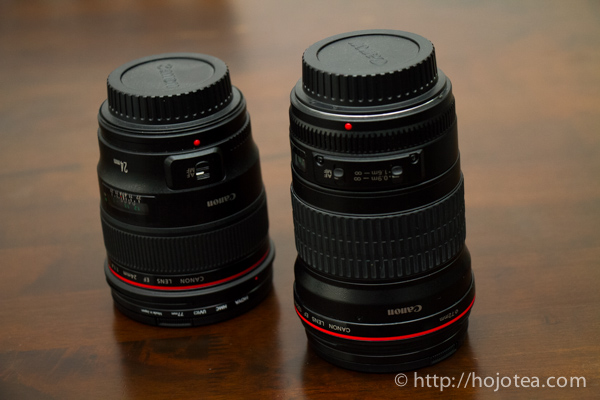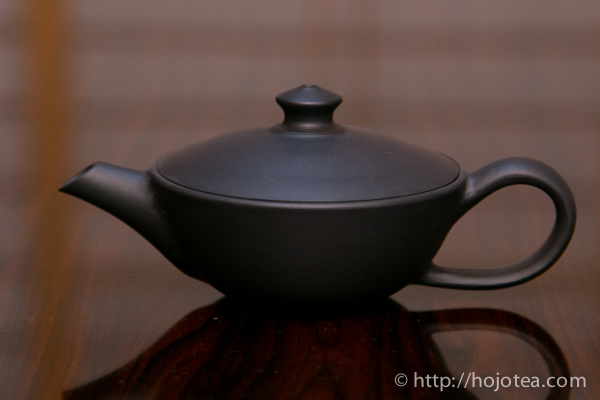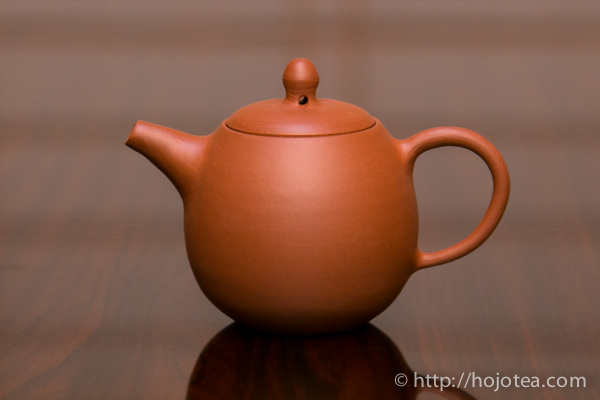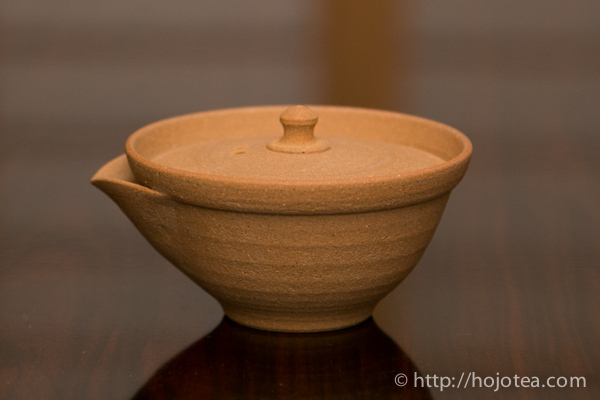- HOME >
- Teapot and Tea Equipment
Selecting teapot and lens has something in common
It is often mentioned that a clay teapot creates a mellower taste in a tea. However, the description of “mellow” somehow is not specific enough to describe the taste. In fact, a clay teapot will modify either body or aftertaste, and sometimes both; but some poor quality clay reduces both aftertaste and body. It is essential for us to understand the contribution of each clay to the characteristic in taste where the effect is related to existence of minerals in the clay. In addition, the firing method using either oxidation or reduction fire affects the body and the after taste of tea as well.
Iron increases the aftertaste, while calcium increases the body
Out of various minerals that exist in a clay teapot, iron plays an important role in enhancing the aftertaste, whereas the alkaline minerals such as calcium are in-charge of enhancing the body. For instance, in one of our lineups, the Nosaka clay, contains less alkaline mineral but is very rich in iron; therefore, it weighs more on the aftertaste. On the contrary, Shigaraki and Kobiwako clay are very rich in alkaline minerals, which will in then contribute more on the body. Despite that, the Kobiwako clay contains both high iron content and alkaline minerals and thus, contributing to the enhancement in both body and aftertaste of tea.
Reduction fire clay increases the aftertaste, while the oxidation fire clay increases the body
Generally, the reduction fired clay increases the after taste and decreases the body, while the oxidation fired clay increases the body and lessens the aftertaste more than reduction fired clay. These are the results shown when a comparison was conducted based on the clays in exactly the same condition.
The body and after taste changes the drinking feeling of tea
If tea has strong after taste with less body, it promotes the image as transparent, clear, sharp and pure. With body, we feel thickness, richness, volume, boldness and side spreading feeling. For enjoying semi-fermented tea such as oolong tea and some black tea, the body is quite important. If the tea lacks body, you would feel that the flavor is mild. I personally enjoy drinking Darjeeling tea using a teapot that increases the body. However, it is also subjective to a person’s preference; some customers would prefer a teapot that only increases the after taste even if the flavor is not very strong.
Selecting teapot is just like the way we select lens for a camera
My customers often inquire my opinion to define the best clay or which clay I favor the most. Frankly speaking, it is not easy to answer those questions as it is not possible to set superiority on the different types of clay. Selecting tea wares are quite like the way we select lens for a DSLR camera. The lens for a DSLR camera consists of wide angle, standard, long distance and zooms. In my opinion, I consider zoom lens the friendliest lens for casual or outdoor photo shooting. However, zoom lens may not satisfy everyone’s perspective. Some people who love cameras, me included, may love the single focal lens of wide angle and telescope. These lenses are meant for special purposes especially when you need the typical character of the particular lens.
I believe it is the same when it comes to tea equipment. For daily or casual use, a teapot made of bone china or Shigaraki clay does the job as it gives reasonable extent of body and after taste. Not mentioning, we also enjoy a teapot that gives outstanding levels of after taste or body. It will noticeably alter the character of tea, plus, it is very enjoyable to use these clays as it makes the taste and flavor very distinct. I choose a specific type of clay based on the time, place and occasion. For instance, early on a cozy morning, I would love to indulge in a clear, transparent and smooth cup of tea. For that, I will choose a clay teapot that gives strong aftertaste and less body such as the Nosaka reduction clay teapot. In the afternoon, I will choose another clay teapot that increases the body so that I can fully enjoy the upcoming flavor of the tea. Thus, a Mumyoi oxidation clay or Kobiwako oxidation clay is what I will go for.

Having a few types of clay with different effects to the taste of tea, we are able to enjoy a wide variety of cup characteristics with flavor and taste in a same cup of tea. It is just like using various lenses on a same camera. This way, tea drinking experience would become much more interesting when we could design different combinations between tea and clay based on different requirements or drinking occasions.
Related Articles
How to get the latest update on HOJO?
1. Follow Twitter, 2. Click "Like" on Facebook, and 3. Subscribe in newsletter. You can have the latest tea news from HOJO.
 Subscribe the Newsletter to enjoy the privileges
Subscribe the Newsletter to enjoy the privileges- You may receive a free sample upon purchase, or you may have the priority to purchase special products. So please remember to subscribe our newsletter as well as the social network.
- Myanmar White Tea Bud 2013 from Guo Gan, Myanmar
- We have released a raw Pu-erh tea, 緬甸白芽茶 2013 (Myanmar White Tea Bud 2013), produced by ethnic minorities in t …
- Yong De Wild White Tea 2025 Loose Leaf Limited Release
- We have released Yong De Wild White Tea Loose 2025. For the 2025 harvest, only the loose-leaf type was …
NEW ARTICLES
 Myanmar White Tea Bud 2013 from Guo Gan, Myanmar
Myanmar White Tea Bud 2013 from Guo Gan, Myanmar- We have released a raw Pu-erh tea, 緬甸白芽茶 2013 (Myanmar White Tea Bud 2013), produced by ethnic minorities in t …
 Yong De Wild White Tea 2025 Loose Leaf Limited Release
Yong De Wild White Tea 2025 Loose Leaf Limited Release- We have released Yong De Wild White Tea Loose 2025. For the 2025 harvest, only the loose-leaf type was …
 Experience the True Freshness of Raw Pu-erh : Tang Jia 2025 Loose Leaf Release
Experience the True Freshness of Raw Pu-erh : Tang Jia 2025 Loose Leaf Release- We have released Tang Jia Raw Pu-erh Tea 唐家古樹生茶 2025 Loose Leaf. Among HOJO’s raw pu-erh teas, Tang Jia Raw Pu …
 Yunnan Chun Jian Green Tea from High Mountain Gardens
Yunnan Chun Jian Green Tea from High Mountain Gardens- Yunnan Chun Jian Green Tea is now available. This tea is made from naturally grown leaves harvested from high …
 Limited Loose Leaf Release of 2025 Da Xue Shan Wild Raw Pu-erh Tea
Limited Loose Leaf Release of 2025 Da Xue Shan Wild Raw Pu-erh Tea- We have released the 2025 loose-leaf version of Da Xue Shan Wild Raw Pu-erh Tea. This tea comes from wild tea …
 Discover a New Way to Enjoy Tea: Cooking Rice with Tea
Discover a New Way to Enjoy Tea: Cooking Rice with Tea- Cooking rice with tea is a simple idea, but it brings surprisingly satisfying results. The tea’s flavour seeps …
 2025 Da Xue Shan Wild White Tea Now Available from Yunnan
2025 Da Xue Shan Wild White Tea Now Available from Yunnan- The 2025 harvest of Da Xue Shan Wild White Tea is now available. Crafted from truly wild Camellia taliensis tr …
 Fresh 2025 Yunnan White Tea – Select Your Favourite Lot Before Blending
Fresh 2025 Yunnan White Tea – Select Your Favourite Lot Before Blending- Freshly crafted in Yunnan and just arrived in KL, our new 2025 white tea is now available at our Gardens Mall …
 2024 Dong Shan Raw Pu-erh Tea – Crafted with the Producer for Desired Quality
2024 Dong Shan Raw Pu-erh Tea – Crafted with the Producer for Desired Quality- We have released the 2024 cake of Dong Shan Raw Pu-erh Tea. Earlier, we offered the loose-leaf version from th …
 Development of Firewood Roasted Hojicha Using Naturally Grown Tea from Yunnan
Development of Firewood Roasted Hojicha Using Naturally Grown Tea from Yunnan- We are currently staying in Yunnan Province for tea production. As the season nears its end, tea trees with pa …
Category
- New Arrival at HOJO Online Shop
- Featured Articles
- Newsletter
- Types of Tea
- Origin of Tea
- Teapot and Tea Equipment
- Tea Column
- How to enjoy tea
- Tea Processing
- How to choose quality tea
- Tea constituents and functional effect
- Safety of Tea
- Foods
- Tea Business Operation
- Hobby and Outdoor Activity
- Ranking of Tea
- Video
- FAQ
- Media Release
Profile

- AKIRA HOJO
- I invite you to experience my tea selections.I was born in Nagano, Japan. In university, I studied agricultural chemistry, and I have the master degree in food science. I worked in Japanese food industry for 10 years. I involved in R&D, QC and QA. As a factory manager, I implemented ISO9000 series and managed the factory.
- The Art of Tea Magazine
- We posted the article on “The Art of Tea Magazine No.9, the magazine is published in Taiwan. We featured …
- New Straits Times
- The Malaysian National Newspaper, New Straits Times featured HOJO Tea on 17-Oct-2007.
Shop Info

Address:Lot No. T-215, 3rd Floor, The Gardens Mall, Mid Valley City, Lingkaran Syed Putra, 59200 Kuala Lumpur
Tel: +603-2287-4537
Business Hour: 10am to 10pm

















